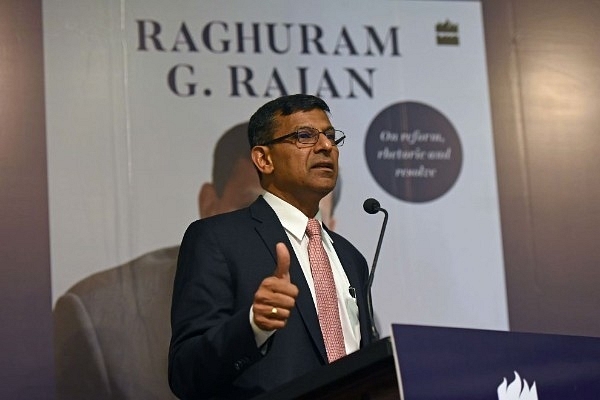
Raghuram Rajan Identifies Causes For NPA Malaise – They Go Back To The UPA Era
A summary of Raghuram Rajan’s note to a Parliamentary panel reveals that the saga of bad loans on public sector banks’ books can be traced back to the governance lapses which occurred under the predecessor UPA regime.
Raghuram Rajan, in a 17-page note to the Parliamentary Committee on Estimates, has identified the United Progressive Alliance-I (UPA-I) era as the source for the non-performing assets (NPA) malaise plaguing India’s banking system.
The committee, headed by veteran Bharatiya Janata Party (BJP) leader Murli Manohar Joshi, had called upon the former Reserve Bank of India (RBI) governor to express his views on the issue of mounting NPAs, which is threatening to derail the economic growth of the country.
The panel decided to seek Rajan’s views after the former chief economic adviser Arvind Subramanian praised his performance at the helm of the RBI in identifying the stressed and non-performing assets piling up on the books of public sector banks (PSBs).
In response to the query on the origins of the NPA crisis, Rajan identified multiple factors such as over-enthusiasm on the part of bankers, slowdown in economic growth, fraud, and malfeasance, among others. Critically, Rajan also flagged governance issues and a subsequent loss of confidence in decision-making by the government as a major factor behind the ballooning bad loans.
In a clear rebuke to the predecessor UPA government, Rajan specifically noted the dubious allocation of coal mines as an illustration of the governance issues contributing to the burgeoning NPAs on PSBs’ books.
While identifying the poor performance of PSBs in doing the requisite due diligence before extending loans, Rajan also dropped clear hints at subversion of established processes because of external considerations. This can be borne out by his statement that “too many loans were made to well-connected promoters who have a history of defaulting on their loans.” Attributing the current bad-loan problem to the exuberant lending witnessed in the period between 2006 and 2008, Rajan stated that a slowdown in economic growth combined with over-enthusiastic projections were the critical factors behind borrowers not being able to discharge their debt.
Interestingly, Rajan attributed some of the enthusiasm on the part of bankers to the fact that previous infrastructure projects such as power plants had been completed within the stipulated time and budget. This could be construed as an indirect acknowledgment of the performance of the National Democratic Alliance-I government under Atal Behari Vajpayee; UPA-I took office only in 2004.
Rajan also defended his actions strongly in initiating a clean-up of bank books by purposefully identifying stressed and non-performing assets and ensuring that banks made adequate provisions for loans gone sour. It may be worth noting that in recent days Rajan has been subject to the criticism that his aggressive identifying of the NPA problem had led to the economic slowdown because banks stopped lending. Refuting this criticism, Rajan highlighted the difference in lending patterns of the public sector and private banks. While the PSBs had started cutting down on lending to industry, the private sector maintained its credit flow and, further, the loan advancement by PSBs in the spheres of personal finance and housing was comparable to the private sector’s lending. According to Rajan, this highlights that PSBs had, on their own accord, recognised the stresses in their balance sheet. It was his contention that had the RBI not initiated the Asset Quality Review, the NPA problem would have continued as a ticking time bomb, further dragging the banking sector into a deeper morass.
A variety of prescriptions have been advanced by Rajan for the purposes of handling the bad loan issue. Some of them include reformation of the governance processes at PSBs, strengthening of the Bankruptcy Code to avoid a gaming of the system by unscrupulous promoters, and evolving durable out-of-court settlements to reduce judicial burden and delays. Mudra loans, farm loan waivers, and the Credit Guarantee Scheme for the micro, small, and medium enterprises operated by the Small Industries Development Bank of India have been flagged as potential future threats to banking finance and health.
A summary of Rajan’s note to the Parliamentary panel reveals that the saga of bad loans on PSBs’ books can be traced back to the governance lapses which occurred under the predecessor UPA regime. The former RBI governor’s diagnosis of the origins and continuation of the NPA malaise deserves to be taken seriously because he has, in the past, been prescient in his analysis of banking sector afflictions, notably when he predicted the Great Recession of 2008.